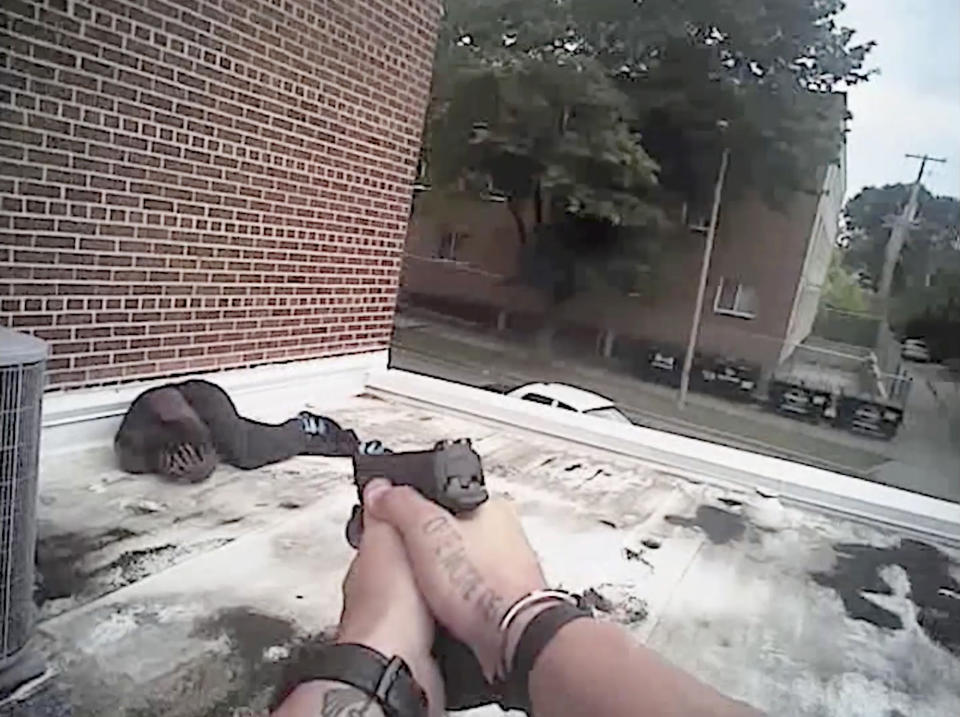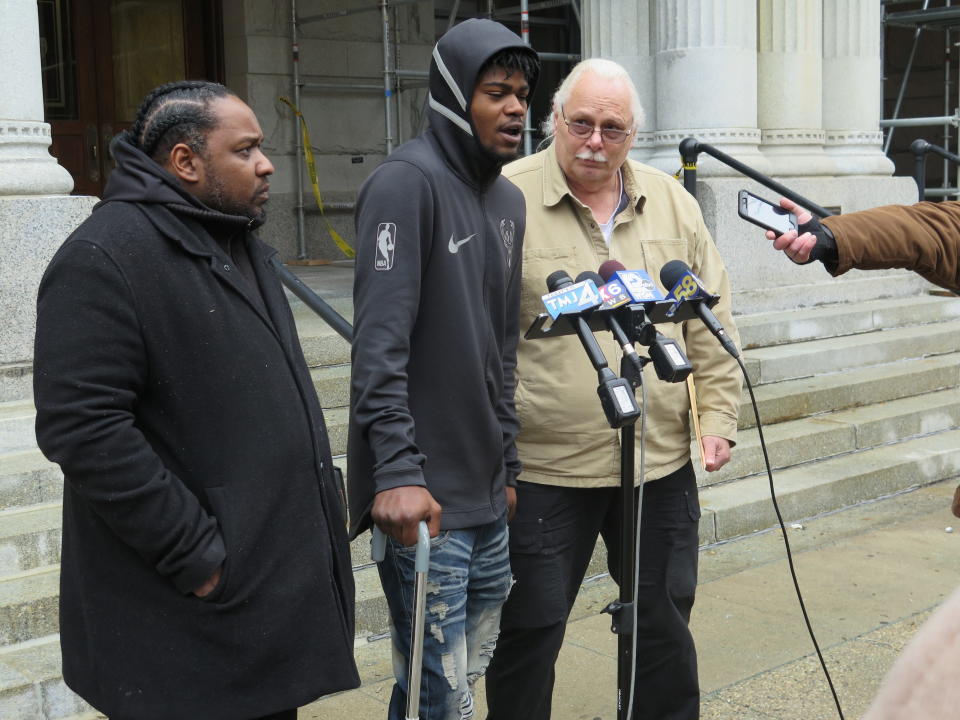Police confront 2 men, 1 white, 1 black: Only 1 is shot
MILWAUKEE (AP) — In the course of 15 months and in the space of one city block, Milwaukee police twice encountered two suspects they believed were armed.
One was black; one was white.
One was in fact unarmed; one had a gun.
One was shot; one was not.
That the black man was the one who was shot — though he had no weapon — might come as little surprise at a time when police shootings involving black men seem commonplace nationally.
Milwaukee has been an epicenter. In 2014, Dontre Hamilton, a mentally ill man, was shot 14 times by police. In August 2016, 23-year-old Sylville Smith was killed by an officer. After the first, the city equipped police with bodycams; after the second, there were riots.
The shooting of 19-year-old Jerry Smith Jr. in 2017 did not set off similar convulsions. And the blood-free resolution of the standoff involving 20-year-old Brandon Baker this past November drew little notice. But taken together, they prompt a difficult and unanswerable question:
If their races were reversed — if Smith were white, and Baker were black — would Baker have been the one who was left bleeding and writhing in pain?
___
In the darkness on Nov. 6, Election Day, Baker took to the roof of his the apartment building in which he lived and started firing guns. His neighbors, alarmed, called police.
Just after 5 a.m., two police officers sent to the scene encountered Baker on Michigan Avenue, in front of the entrance to the building.
He refused to drop the AR-15 semi-automatic rifle he was holding. He acknowledged that he had fired the shots earlier, and said he had posted a video of it on Twitter. He told the officers he was running for governor, that he was going to the polls to "air it out," that he was going to start a militia. He had a right to bear arms, he said.
As they talked, other officers approached him quietly from behind, and tackled him.
"I'm not moving, don't shoot me!" Baker screamed in the video he was broadcasting, which WISN-TV obtained before its removal from Twitter.
Not a shot was fired.
In addition to the rifle he was holding, Baker, had three loaded handguns — one in his backpack, another in his waistband, and a third in his jacket, prosecutors said. In his apartment, they said officers found LSD, psilocybin mushrooms and the psychoactive ingredient of marijuana.
Baker faces numerous charges, including recklessly endangering safety and "maintaining a drug trafficking place." His public defender has ordered a second doctor's evaluation to determine whether he's competent to stand trial.
___
On Aug. 31, 2017, officers Melvin Finkley and Adam Stahl received a call about a man with a gun in the predominantly black neighborhood west of downtown Milwaukee. Finkley is black; Stahl is white.
It was around 1 p.m. when they got to the parking garage at North 29th Street and West Wisconsin Avenue. Jerry Smith was on the roof.
That afternoon, he and a friend had gone to a house in the neighborhood to confront someone with whom Smith had a problem. Police later said Smith and his friend were looking for a fight, and after a brawl ensued with several others, Smith left to get a gun. When an officer approached him to ask about the fight, he ran away and took to the roof.
A handful of officers below were yelling commands, telling him to put his hands up because they had him surrounded.
Two officers stood on the stairs leading up to the garage's roof. When Finkley and Stahl approached, Finkley asked: "He got the gun in his hand?"
"He doesn't have a gun in his hand, but he was hiding behind the AC unit," an officer responded.
Finkley and Stahl climbed to the roof with their guns trained on Smith and joined the chorus of officers yelling commands. Smith briefly extended his arms just above his waist to show his empty hands, palms out, then began crouching slowly to the ground. That's when the two officers fired three shots, with one bullet grazing Smith's head and the others striking his abdomen.
"I'm going to die!" Smith wailed, on the ground. "I didn't do nothing."
The encounter lasted about 10 seconds. No gun was found.
___
Smith survived, but his right leg is partially paralyzed and he needs a cane to walk. He wasn't charged with a crime and has a pending federal lawsuit against the police, alleging officers acted "with deliberate indifference."
"I had my hands up. It's on them," Smith said at a recent news conference.
But the Milwaukee district attorney's office reviewed Smith's shooting and concluded the officers' actions were justified because they "reasonably believed" Smith was armed, based on information from dispatch.
Milwaukee Police Chief Alfonso Morales said people need to consider "the totality of the circumstances" when an officer is involved in a shooting. He said officers are under stress and taking in a lot of information — from what they are told while responding to a call to their own observations — and they have to make sense of it all in seconds.
Milwaukee Mayor Tom Barrett declined to comment on Smith's shooting because there's pending litigation, but in a statement he cautioned against comparing the Smith and Baker cases.
"Comparing two separate incidents is inevitably problematic because circumstances police officers face and observations they make are different in every situation," he said.
Others, though, are troubled by two encounters with very different outcomes.
Alderman Khalif Rainey, who is black, contrasted Smith's shooting with how police apprehended Baker "without having to harm him at all."
Rainey said he's stopped believing he'll never find himself in a situation like Smith's.
"It's real serious. At one point in time I thought, 'Not me,'" he said. "But now it's like, something goes wrong, you make the wrong move, you make the wrong gesture ... and now I'm shot. Now I'm paralyzed. Now I'm dead."




